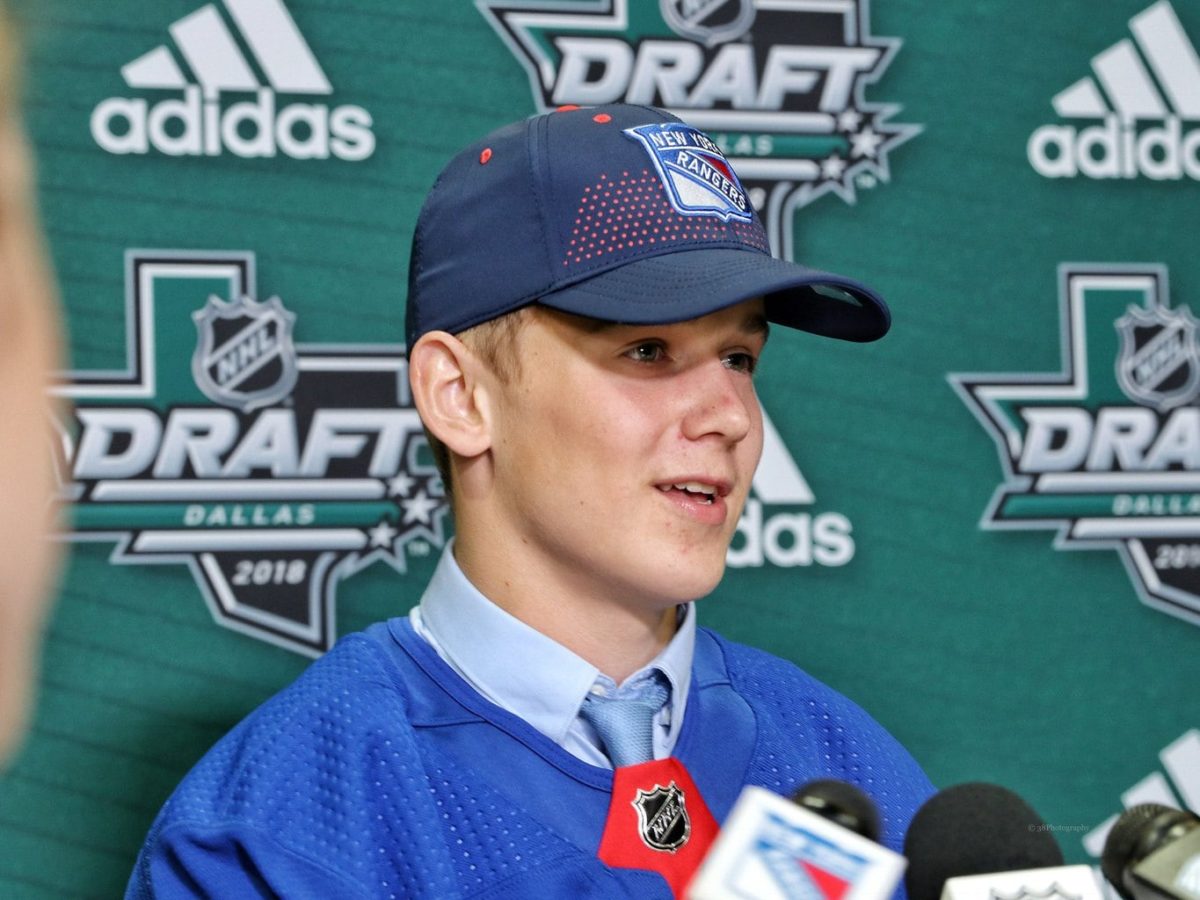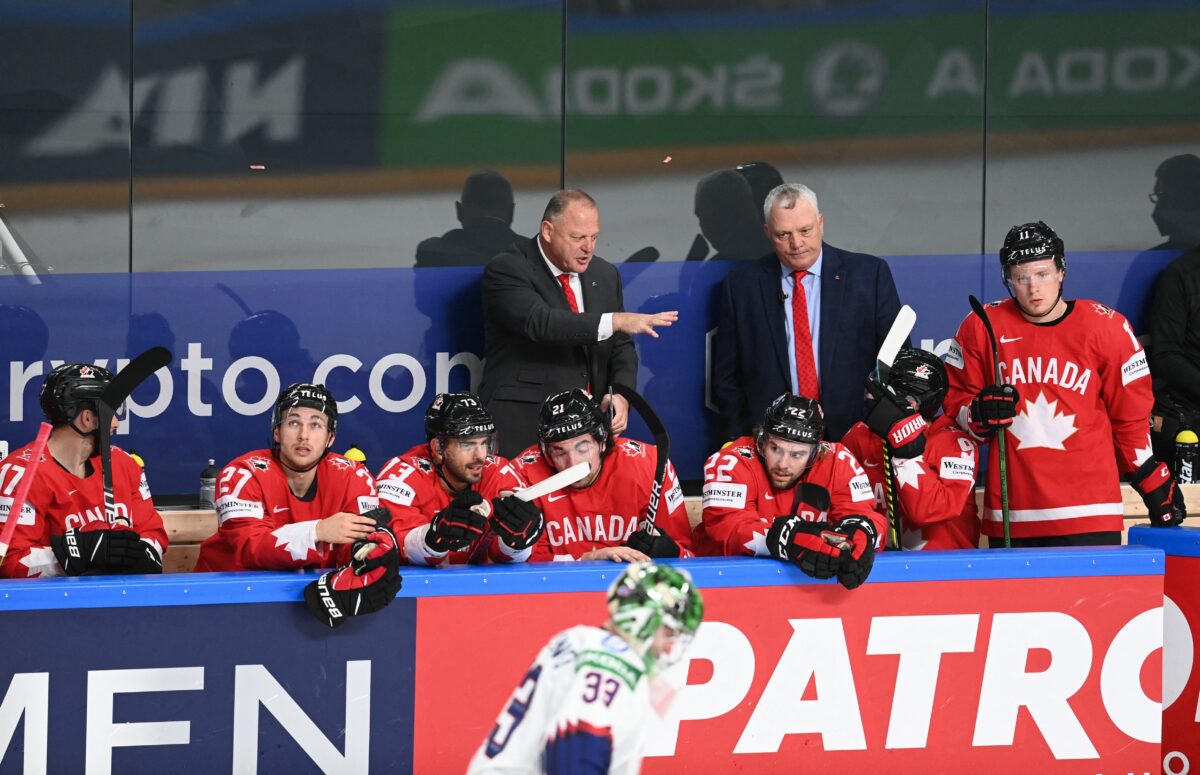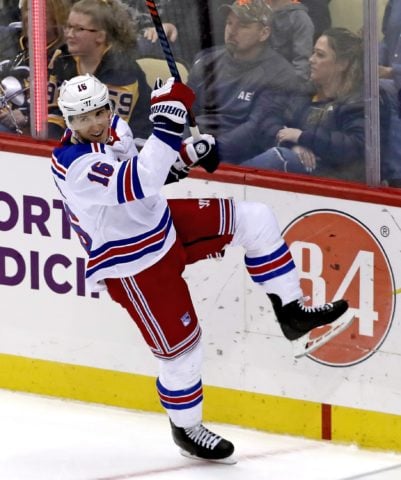Other Rangers Season Preview Articles:
The New York Rangers 2021-22 season opens up in our nation’s capital in just 35 days. This year’s group will enter the year with expectations of a postseason return, with some imposing men joining the team both on the ice and behind the bench. But the additions didn’t mitigate all the uncertainty surrounding the Rangers, and five burning questions remain.
#5: Will Lundkvist Win the Rangers’ Final Spot on Defense?
The Rangers seemingly have five spots occupied on the blue line with one opening remaining. Adam Fox, Ryan Lindgren, Jacob Trouba, K’Andre Miller, and newly acquired Patrik Nemeth seem poised to appear on defense come opening night. But there are several viable options for the sixth and final spot, including Swedish standout Nils Lundkvist.

Lundkvist was a Rangers first-round selection in 2018, dominating in the Swedish Hockey League the past two seasons. He has made the journey to North America and will be vying for a roster spot come October 13. The reigning Salming Trophy winner would be a virtual roster lock on most young teams, but several other defenders will give Lundkvist a run for his money.
University of Massachusetts standout Zac Jones will be his main competition in camp. Still, other players such as Jarred Tinordi, Libor Hajek, and Anthony Bitetto will all be fighting for every second of playing time. Braden Schneider, a first-round pick in 2020, could make things interesting if he has an excellent training camp, but his age still makes him a longshot.
That level of competition makes Lundkvist’s roster status less concrete than some would think, paving the way for burning question one.
#4: How Will Gallant Manage Time on Ice for the Forwards?
If you have any form of social media, you probably saw gripes about former New York bench boss David Quinn’s forward usage numerous times last season. Time on ice was a constant hot topic, and it seems that this year it may be a topic of conversation once more.
With the additions of Barclay Goodrow, Ryan Reaves, and Sammy Blais, newly-named head coach Gerard Gallant will have to manage how much ice time he will give the role players. Does he envision the third and fourth lines playing similar minutes while the heavy bulk is given to the top-six? Or does he want to give the skill of the Rangers top nine a chance to shine while limiting the newly formed physical fourth line to single-digit minutes?

Another ice time component that will surely stir up discussion is how Gallant distributes time between the power-play units. The 2020-21 season saw unit one dominant power-play time, while unit two was an afterthought. There were over two minutes of PPTOI differential between the units per game last season.
Will that change with a new head coach?
#3: Can Lafreniere, Kakko, and the Youth Take That Next Step?
For the Rangers to meet expectations and once again return to the postseason, the young core will have to take a giant collective step. With the departures of Pavel Buchnevich and Colin Blackwell, Lafreniere and Kakko will seemingly have spots in the top-six. Both could find themselves on Mika Zibanejad’s two wings, Kreider getting bumped down to line three and Vitali Kravtsov getting a spot with countrymen Artemi Panarin.
Kakko, Lafreniere, and Kravtsov join Filip Chytil as key forwards looking to take strides in 2021-22. If they all can improve, this Rangers’ offense is poised to be as lethal as any in the league. This group finished 10th with 3.14 goals per game in 2020-21, with the four young forwards totaling 64 combined points. All four possess the ability to put up 50 points over an 82-game campaign, with some expecting even more from the former first and second overall selections.
Increased minutes and power-play time coupled with a full training camp should do wonders for the quartet’s confidence. Ultimately, the youth movement’s excitement is irrelevant if the production doesn’t follow suit on the ice itself. Thus raising the burning question: will the young Rangers take that crucial step next season?
#2: What Does a Contract Year Have in Store for Zibanejad and Strome?

Barring any late transactions *cough Eichel cough* both Zibanejad and Ryan Strome will be entering their contract seasons with the Rangers. There is no denying both have been incredibly good for the Blueshirts, giving them some stability and tremendous scoring from a position that has historically been a weakness.
Both players are playing to earn a lucrative contract, which is a blessing and a curse for the Rangers. For a team that has to sign many of their younger players in the coming years, monster years from both players could spell financial trouble. Strome is unlikely to return, but Zibanejad very well might, and this 82-game campaign will determine his asking price.
The positive in this scenario is that short term, both players having this much to play for could ensure massive production for the one and two center spots. Zibanejad will look to come out on fire, scoring at the rate that made him a brand name two seasons ago. Strome will look to build off a second-straight campaign with eye-catching numbers, garnering himself a payday in the offseason.
Can Strome eclipse 60 points? Can Zibanejad net 50 goals? Time will tell what this contract year has in store for both Zibanejad and Strome.
#1: Can Shesterkin Play Up to His New Contract?
Fresh off a lucrative four-year, $22.67 million contract, Igor Shesterkin is poised to carry the workload for the Rangers in goal. Now established as the number one goaltender, the 25-year-old Russian netminder enters 2021-22 with the weight of a franchise on his shoulders and the expectations that come with a $5.67 million AAV.
The coming season will bring with it a newfound pressure for Shesterkin, who spent his first season as a number one goaltender in the NHL, playing most of his games in front of minimal crowds. Goaltending is always a pivotal component of a team’s success. The Rangers have found themselves a perfect one in Shesterkin, but he must continue to prove his talent and worth on the heels of his new deal.
With only 43 starts in his NHL career, Shesterkin faces the daunting task of doubling that total next season. Over those 43 starts (47 games), he is 26-16-3, with a goals-against-average of 2.59 and a save percentage of .921. Can he improve upon those numbers and solidify himself as one of the best goaltenders in the game? That question will be answered over the course of this campaign.
Think you can predict the future? Leave your predictions for these four burning questions below! Also, check out some other burning questions from Rachel Nones here.